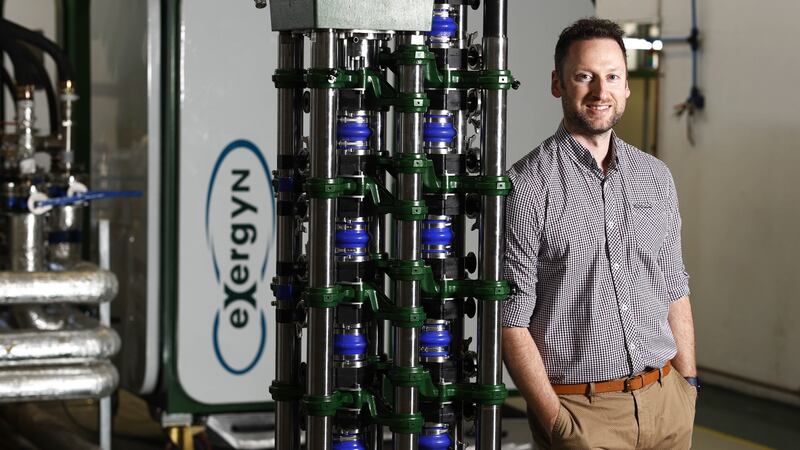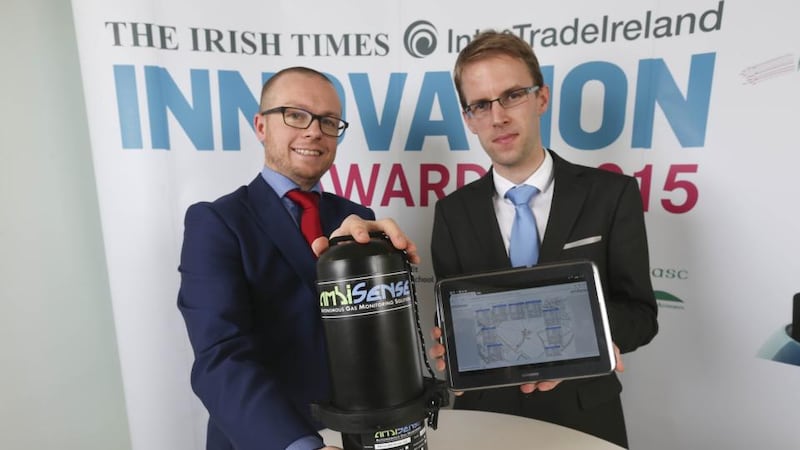As the demand for more environmentally friendly products and services grows, so too does the “cleantech” industry in the Ireland.
Cleantech, short for clean technology, broadly refers to companies that aim to improve environmental sustainability. Over time, it has widened to include those offering green technology, renewable energy, recycling methods and so on.
It spans a range of industries and processes, from manufacturing and construction to agri-food and smart cities, and has become integral to the future where emissions must be lowered if we are to meet our emissions targets.
And it’s not just about ticking boxes to keep officials happy; consumers are also demanding more environmentally conscious services.
RM Block
An exact figure for the size of the industry is difficult to gauge, given its wide reach and the breadth of activity. But the area has been earmarked as a potential growth area for Irish companies. Last year, Enterprise Ireland-backed companies classed by the organisation as “cleantech” saw a 9 per cent increase in jobs over the year.
On the island of Ireland, there have been some interesting developments in cleantech. Earlier this week, plans were published for the Galway Hydrogen Hub (GH2), a project that would create Ireland’s first hydrogen valley — a regional ecosystem that links hydrogen research, production, distribution and transportation with end users such as transport and industry.
Belfast-based Catagen, meanwhile, was recently awarded two lots of funding by the UK government to help further its research into new net-zero technologies, with one award for the development of high-pressure hybrid pumping for hydrogen storage and dispensing, and the second for the development of an e-fuel as a replacement for red diesel.
The idea of capturing carbon emissions from the air and sequestering them may be a long way off from solving our environmental problems. But there are companies working on preventing those emissions from ever getting into the atmosphere.
MOF Technologies has come up with something it says will do just that. The Queen’s University Belfast spin-out works with a class of nanomaterials known as metal organic frameworks (MOFs) — crystalline, sponge-like materials that are highly porous and can store, separate and capture specific gases.
“The beauty of these materials is that you’re able to design the chemistry within them. You effectively have this autonomy to change the building blocks of the material, almost like Lego. You can pick different metals, different organics and you can combine them together to create this very, very porous material, which is very specific in capturing certain gases like CO2,” said Conor Hamill, co-chief executive of MOF Technologies. “Harnessing the properties of those materials in a carbon capture-type application is where we’ve really started to extract their value and started to make incredible inroads in terms of using these materials to help so many of these industries start to decarbonise their operations.”
MOF Technologies has overcome one of the challenges of working with such materials: manufacturing them on an industrial scale in a cost-effective, environmentally friendly way that is also fast and scalable. And now, they can be used to help decarbonise essential industries.
The company has been working for a decade on the technology. “There’s no other material out there that can capture CO2 as much, as fast, and as efficiently,” said co-chief executive Jose Casaban. “What we have done is become experts on the materials and also on the engineering side of the system to be able to develop a full MOF-based solution. Now we have a piece of apparatus that you can plug in and just capture CO2 in the cheapest way possible.”
The company says this filter system could be retrofitted to plants, such as a cement or steel works, or a waste-to-energy plant, and potentially have a major impact on reducing harmful emissions.
“The filter just retains and holds on to that CO2 and once that fills up and becomes saturated, we will just apply a vacuum and suck the CO2 out again, and the filter is ready to be reused to capture even more CO2,” explains Hamill.
The materials can be used over and over again, making it a cost-effective investment for industry and a good option for the environment. And the whole system is not only cost-effective — cost has been a major dealbreaker for the use of similar technologies in the past — but also modular, which means companies can add to its capacity as necessary.

Dublin-based Exergyn is also working with metals, but from a different perspective. It has developed a groundbreaking thermal management technology that can be used in a heat pump but is emissions-free and contains no refrigerant gases, one of the main causes of global warming.
And not only that, it will be affordable too.
“Instead of using refrigerant gases to cool or to heat, we use something called shape memory alloy, which is a metal. So the basis of a refrigerant gas is you change its phase — a liquid phase or a gas phase — and you cycle basically between liquids and gases and back,” says Exergyn co-founder Kevin O’Toole. “We’re doing that in a metal and we’re changing from a solid phase to another solid phase within the metal. It’s a lump of metal — it doesn’t leak. And you get the same kind of behaviours in terms of cooling and heating from this very unique type of metal.”
The technology is getting attention. Exergyn has already been linked with US heating giant Carrier Global, with a partnership to bring the technology to market and rumours of a potential buyout by the US giant — something that caused backers of Exergyn to write to the board amid fears the unannounced deal was undervaluing the company.
While some companies are working to make processes cleaner and greener, there are also companies that are using new technology to assess environmental risk. And in a world where Covid has made us all more aware of the environment around us, the more data we have, the better.

Ambisense may not have a rumoured takeover in its sights but it has raised €5 million in funding from venture capital companies including State-backed BGF. The company was born from a need for more data to help companies make proper risk assessments, and has developed sensor technologies for environmental monitoring, using developments in the Internet of Things and artificial intelligence (AI) to capture and interpret the data.
Before he set up Ambisense in 2014, Stephen McNulty sold laboratory services that monitored pollution. But the system for gathering the data he felt was lacking, capturing only a snapshot in time rather than continuous data over a longer period.
“It was clear that there was a drastic need to get better data so we actually could understand what the polluting processes are and what can we do about them,” he says. “The entire mission of the business is to build technology solutions that mitigate for environmental risk. And that’s I suppose now more relevant than ever.”
It has been an eight-year overnight success story, McNulty jokes.
“The first years are so difficult because you’re pitching things that people haven’t thought of before or don’t want to or can’t do from a procurement perspective. Then you finally hit paydirt at some stage. That happened for us maybe late 2019, we really started to get some huge projects in that people were prepared to deploy technology and use data to understand what might be happening,” McNulty says. “Now it’s completely different again. The focus is on ESG [environmental, social and governance] and climate change and reducing the carbon cost of construction. Those are massive tailwinds now that we didn’t have two years ago, so it’s very much a different story.”
That has led to a growing market for Ambisense in the UK and Europe, with opportunities in Australia and New Zealand too. The US hasn’t been a major focus for the company in recent years, but there are some opportunities there.
“We have to focus in on where we think we can generate scale,” says McNulty. “We have two parts of our business. One is infrastructure in the construction sector, where we deploy technology to mitigate environmental risk of major infrastructure projects. Typically those projects are so big that we need to operate them locally. If we were to get into that market in the US we would be pitching for projects and getting them. But effectively on the construction side of the business, there’s a huge level of spending in that sector and a huge focus on environmental compliance. This phase of our start-up journey is more than fulfilled by markets that are more local.”
And with that could come more funding. As the cleantech industry has advanced, so have the investment opportunities. Instead of pitching itself as a technology company, as Ambisense did in its early days to attract funding, now the company wears its cleantech credentials proudly.
“This a really hot space to invest in,” McNulty says. “I think whether it’s employees or investing, it is a really great opportunity and certainly it’s the decade to be building this type of business.”






















